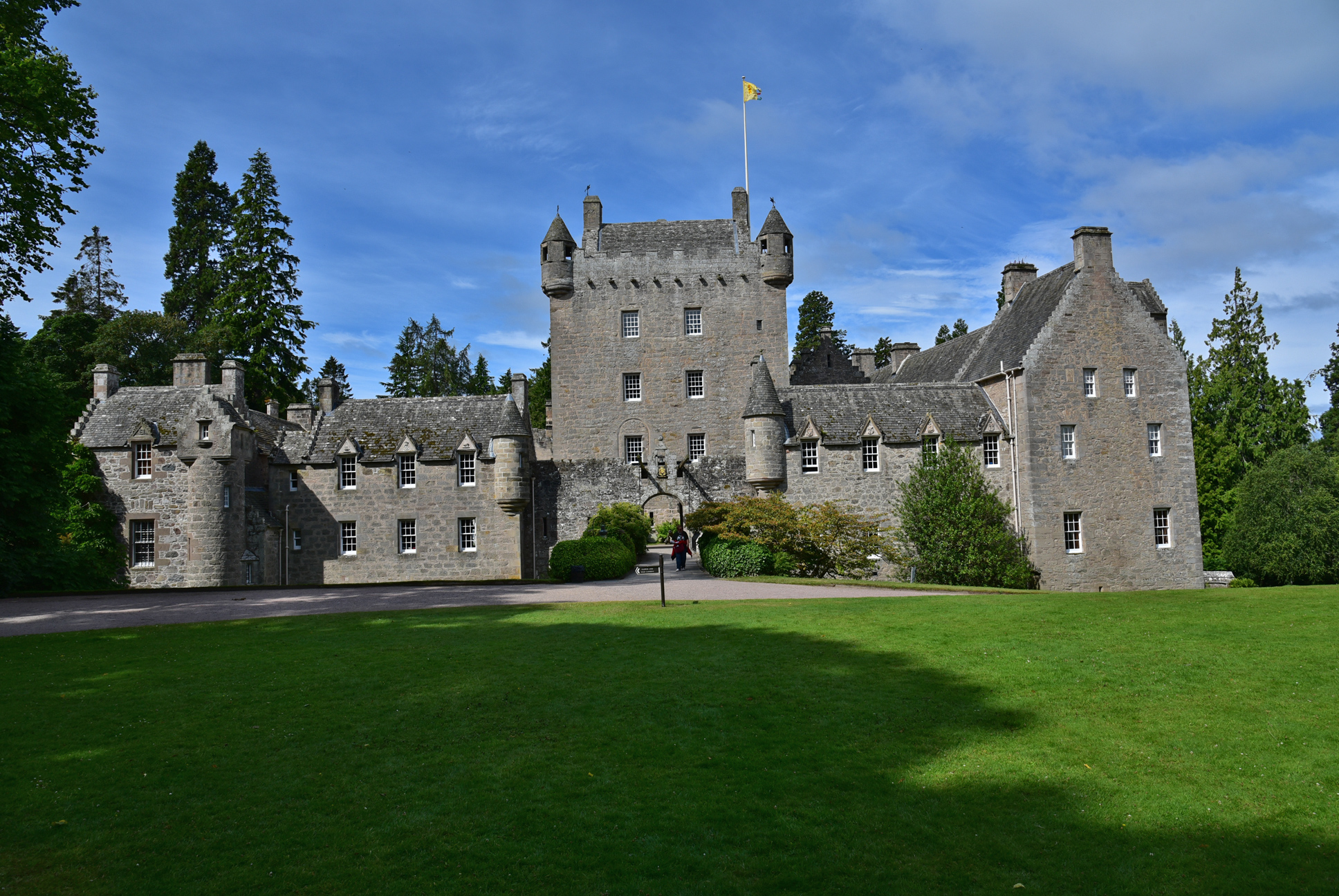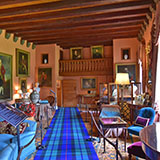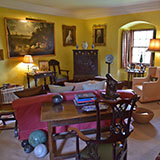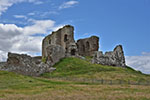History
William Calder, 6th Thane of Cawdor, was a friend of King James II of Scotland, who in 1454, granted him a Special License, written in Latin, mainly concerned with turrets and defensive works to his "Castle of Cawdor, situated in our sheriffdom of Invernairn… and for the perfection and completion of the said Castle". Some historians suggest the oldest part of the castle dates from 1380, and the license to crenelate was granted to add to the tower house.

Scottish legend states that the Thane of Cawdor decided to build a new castle. Following instructions he received in a dream, he loaded a coffer of gold onto the back of a donkey and let it roam around the district for a day. Wherever the animal lay down to rest in the evening, there his castle should be sited and would prosper evermore. The donkey lay down under a tree, which still exists and is now petrified, at the base of the old tower of Cawdor Castle.
In 1455, the massive iron gate was brought from Lochindorb Castle, which was dismantled on the orders of King James II, and placed at the entrance to Cawdor Castle.
In 1511, the Campbells obtained Cawdor Castle when the Earl of Argyll, the most influential man in Scotland, kidnapped Muriel, the heiress of the Calder family. At the age of 12, she was married to Sir John Campbell, the son of the Earl of Argyll.
Lady Muriel survived in a turbulent time. Her sister-in-law, Janet Douglas, was burned at the stake on false charges of witchcraft. Her brother-in-law plummeted to his death from the rock face of Edinburgh Castle while trying to escape its prison. Her niece was burnt alive with her small children at Corgarff Castle when the castle was set ablaze by Adam Gordon of Auchindoune Castle.
The Campbells of Cawdor, Muriel's descendants, remained at the castle and began extending it. Improvements, including the garden, were added by John Campbell, 12th Thane of Cawdor, who purchased rich lands on Islay. The gardens and an orchard were first mentioned in 1635. In 1639, a contract was made with Nairn masons for a significant rebuild of the north range, including what then was called the auld hall, now known as the drawing room.
In 1645, Lord Montrose and a Royalist army routed the Puritan Covenanters at the Battle of Auldearn, less than six miles from Cawdor Castle. Orders were given to burn and plunder the Thane's lands. In 1646, Lord Montrose returned and burned the Thanes' barnyards to ashes.
During Cromwell's campaign to subdue the Highlands, a warrant was signed by General Monck, exempting the use of Cawdor Castle for use as quarters by officers or soldiers, sparing the castle from drastic modifications as a barracks.
After the Restoration of King Charles II in 1660, Sir Hugh Campbell, 15th Thane of Cawdor, added to the north and west ranges and renovated the tower house. In the 1680s, his son, Sir Alexander Campbell, was stranded in Milford Haven during a storm when he met Elizabeth Lort of Stackpole Court. The two fell in love and were married, after which the Campbells of Cawdor mainly lived on their estates in Pembrokeshire, Wales. Cawdor Castle was then home to the younger brothers of the Campbell family.
In 1699, a contract gave orders to take down the tiresome little tower, and a library wing was built with a parapet of balusters. In the 1720s, Archibald Campbell made more repairs to the castle, including re-slating the older roofs and creating a new garden.
In 1746, the Campbells gave refuge to Simon Fraser, Lord Lovat, during his flight from Hanoverian troops during the Jacobite Rising by hiding him in a small room in the garret. However, Fraser would eventually be caught and executed. Charles Edward Stuart, also known as Bonnie Prince Charlie, visited Cawdor Castle the same year.
In 1789, John Campbell, 19th Thane of Cawdor, married the daughter of the Earl of Carlisle of Castle Howard. He was enrolled as Lord Cawdor in 1796.
In 1819, an accidental fire gutted the middle floors of the tower house, destroying early family portraits and decorations. In 1827, John's son was created Earl of Cawdor, and he built a sturdy house attached to the castle on the south side, facing Sir Archibald's garden.
Castle Highlights
Cawdor Castle is one of the most well-preserved strongholds in Scotland. It is situated on the Cawdor Burn, a tributary of the River Nairn, in the foothills of the Grampian Mountains. The centerpiece is the tower house part of the castle, a rectangular four-story building with a vaulted garret (attic) and spiral staircase. The roof has a parapet and bartizans at each corner. The castle also has a pit prison, or oubliette.
The highlight of the castle is the Drawing Room, which was once the Great Hall. It has a huge fireplace dating from 1684, which is embellished with family emblems of the Stag's head and buckle. A minstrel's gallery is located at the opposite end of the room. The room is adorned with many portraits of the Campbells.
The Tapestry Room is the best bedroom, located above the Drawing Room. It forms part of the 17th century additions to the castle. The tapestries depict subjects from the Bible, such as Noah and his family sacrificing a lamb as an offering after the flood and the building of the Ark, as well as Moses and the Israelites crossing the Red Sea.
The formal gardens next to the castle are well worth a stroll. There is a walled garden, a flower garden, and castle grounds which feature numerous species of trees. There has been a designed landscape at Cawdor Castle for over 350 years.
Cawdor Castle can be explored in half a day, or longer if you also explore the castle grounds. Culloden Battlefield is just a few miles away, making it a great way to spend a whole day. Or if another castle is desired, Duffus Castle is close enough to visit the same day and should only take an hour to explore.
Cawdor Castle is also haunted.



